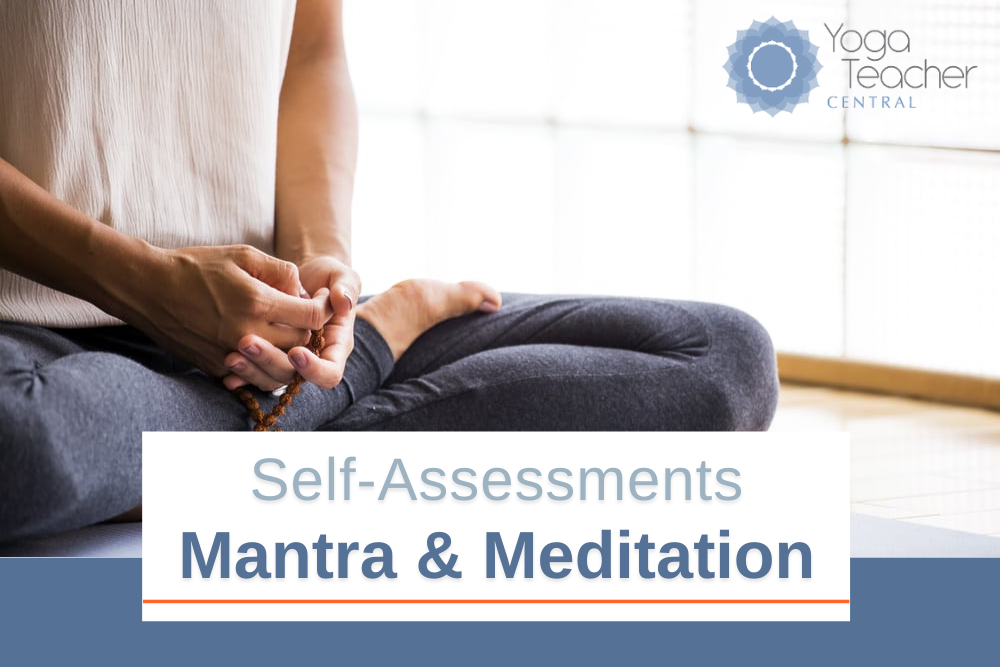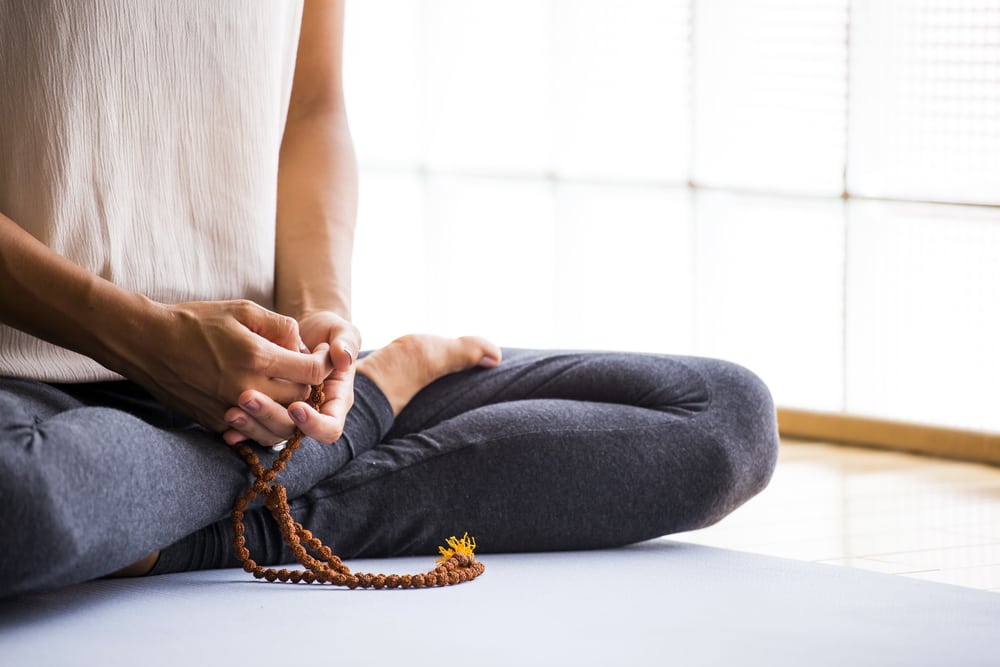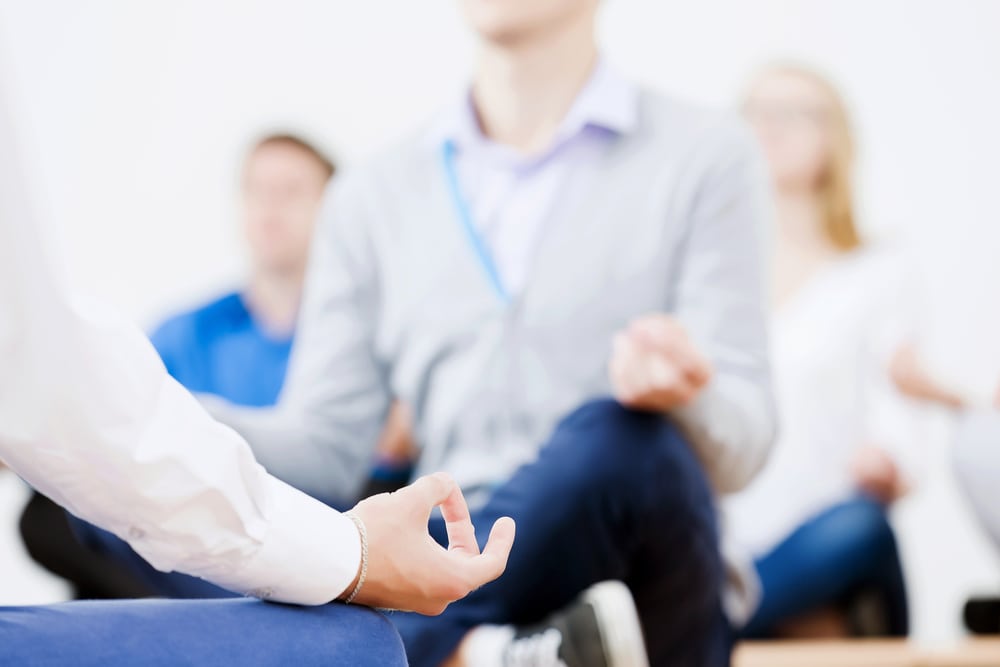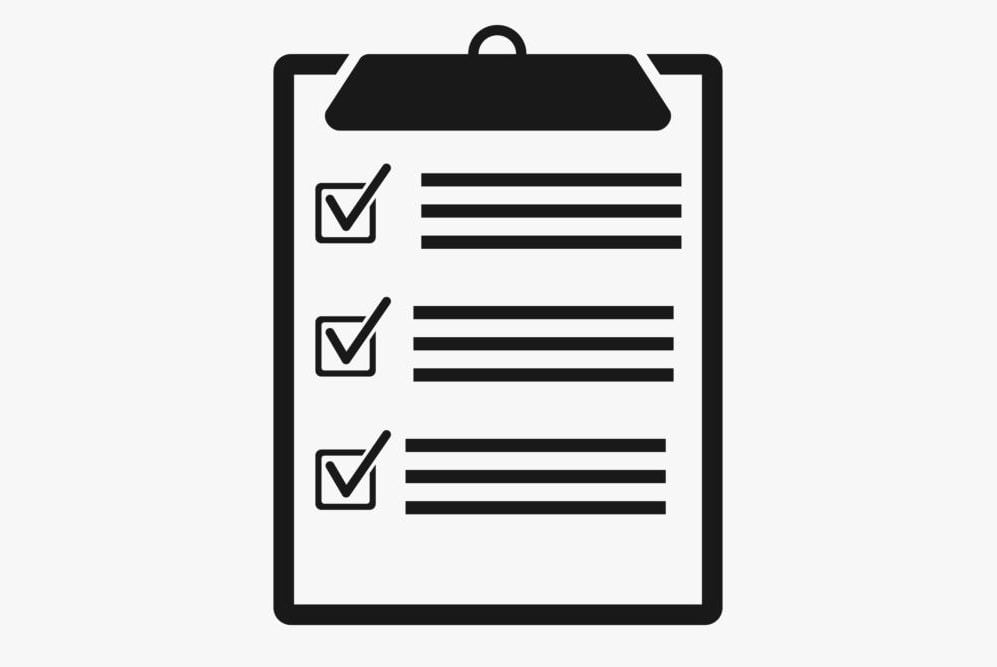
Introduction
Quickly assess your knowledge of Mantra & Meditation Foundations, and identify gaps in your education. See below for assessments on these subjects:
- Mantras & Chanting Introduction
- Meditation & Mindfulness Introduction
- Meditation Effects
- Teaching Meditation
Purpose
Offer a series of free quizzes for yoga teachers to:
- Provide an effective way to assess knowledge of each of the Teaching Knowledge Standards.
- Make it easy to self-assess privately, on your own time.
- Help teachers who identify educational gaps to bolster their knowledge with accessible and practical lessons.
More Self-Assessments
For more self-assessments, see the Standards & Self-Assessment Hub.
Mantras & Chanting Introduction

Teaching Standard
Become aware of the central role and importance of mantras in yoga practice.
Assessment
- What is a mantra?
- What is Mantra Yoga?
- Translate “mantra” and its Sanskrit roots.
- What are some intentions or effects of mantra practice?
- How does Swami Sivananda Radha explain the difference between mantra and prayer?
- What are three broad categories of chanting?
- Describe the three categories of chanting.
- How is the power of Saraswati said to relate to mantra?
Meditation & Mindfulness Introduction

Teaching Standard
Have a foundational understanding of meditation from a yogic perspective.
Assessment
- How does the Yoga Sutras define “meditation?”
- How is the word meditation used in common parlance?
- In what way is meditation a “catchall term”?
- What is the relationship between yoga and meditation?
- Give examples to support the perspective that all yoga techniques are preparation for meditation or forms of meditation.
- Name ten or more styles of meditation.
- Is yoga meditation different from other styles of meditation and if so, how?
- How does Pema Chodron define “mindfulness?”
- Using Pema Chodron’s definition, how do mindfulness and meditation relate?
- What are some daily habits that can lead to increased mindfulness?
- What are some of Buddhism’s traditional teachings on mindfulness?
Meditation Effects

Teaching Standard
Become knowledgeable about the many potential effects of meditation and become proficient in explaining yoga philosophy related to thoughts, sensations, suffering, absorption (samadhi) and meditation.
Assessment
- List ten or more potential benefits of meditation.
- How does yoga philosophy explain suffering, and what does it say is the remedy?
- What vital awareness is gained by disengaging from thoughts?
- How does meditation help with strong sensations?
- What other practical skills or characteristics does meditation help to develop?
- Timothy McCall MD points out that while meditation relieves stress, yoga has many other tools that also offer this benefit, including breathing practices, chanting and Restorative Yoga. And yet, “to many dedicated yogis, however, meditation is the crown jewel of the practice.” Why?
- Describe Jill Bolte Taylor’s experience from a massive stroke located in the left brain hemisphere.
- How does meditation affect the perception of pain?
- How does meditation affect thinking and feeling states?
Teaching Meditation

Teaching Standard
Become knowledgeable in how to apply the philosophy and knowledge of meditation to practical and effective teaching.
Assessment
- What is the fundamental advisement for teachers of meditation?
- What preparatory practices can support meditation?
- What element of meditation is crucial to teach?
- What gentle reminder can you provide students for their meditation practice?
- Discuss the importance of cultivating the ability to “begin again.”
- What aspect of the mind’s nature can meditation help us to observe?
- How can meditation be taught as a form of relationship?
- Teachers are advised to “not push” students who are caught in resistance. On the other hand, what is the next step for those who wish to advance in practice?
- According to yoga wisdom, when are the most potent and effective times to meditate?
Next Steps

- To view more self-assessments, go to the Standards & Self-Assessment Hub.
- To bolster your knowledge and be recognized as a YTC teacher, enroll in the Yoga Teacher Central Study Program (details below).
- Members, view clear and concise lessons:

In a Nutshell
- The enrollment fee is $25 and is open to Yoga Teacher Central members, past members and non-members.
- Members receive current membership benefits plus additional benefits listed below.
- Enrollment in the Study Program qualifies you for lifetime YTC Teacher status.
Benefits
Enrolling in the Study Program gives you:
- A downloadable Knowledge Standards Lesson Guide to walk you through a structured study path toward certification.
- Selection of 5 downloadable lessons of your choice (from a library of nearly 500).
- Recognition as a YTC Teacher (for life; no expiration).
- Professional marketing kit for highlighting your YTC Teacher status on social media and your website.
- Excellent preparation for taking certification exams.
Members
- Your current membership gives you online access to not only thousands of pages of organized study and teaching knowledge, but also sequence breakdowns and teaching notes, theme plans, injury cheat-sheets, and so on.
- When you enroll in the Study Program, you get these additional benefits: a Knowledge Standards Lesson Guide, selection of 5 downloadable lessons of your choice, and a professional marketing kit for highlighting your YTC Teacher status on social media and your website.

See here for information about exams, badges and certification. Get links for each exam, and for a no-risk trial exam.
We think you’ll enjoy taking the exams. The questions are well-thought-out and the subject matter is quite engaging and significant for teachers. You’ll get an inspiring teaching after answering each question. At the end of the exam, you see a summary of wrong answers and the relevant teachings, giving you a personal study guide targeted to your needs.
This is an hour well-spent!








